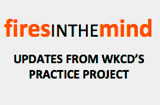by Barbara Cervone
HAMPTON, VA—Think of a teen center, and you might imagine a funky space for old couches, pool tables, perhaps a few exercise bikes. But in this diverse municipality on the southeast end of the Virginia peninsula, the teenagers who on this June day are leading tours of their city’s first teen center are flexing their political muscles instead.
bikes. But in this diverse municipality on the southeast end of the Virginia peninsula, the teenagers who on this June day are leading tours of their city’s first teen center are flexing their political muscles instead.
As members of the Hampton Youth Commission, they played a substantive part in years of action that brought the facility about. Along the way, they helped strengthen a web of authentic civic opportunities for youth that has put their city—one of the oldest in the United States—on the map.
It sounds revolutionary: creating a formal, substantive role for youth in local policy-making and planning. But for fourteen years, Hampton’s city government has managed it—earning Hampton the 2005 Innovations in American Government award and a spot on the America’s Promise list of 100 BEST Cities for Young People.
The new teen center is the partnership’s latest triumph. Initiated after youth rallied City Hall ten years ago, it took a decade of planning and searching for a suitable building. Now its two-story facility will house a cyber café, an art and creativity center, a recording studio, a food court, and much more.
But Michael Bock, a Hampton High School senior and a veteran of the Youth Commission, is not sitting on those political laurels. “What’s our next major project?” he asks the young people and families he is leading through the new center. Within minutes, he has them sticking Post-It notes to the walls, answering questions the Youth Commission has posed about the city’s environment, schools, public transportation, and more.
“What you say will inform us as we look ahead,” Michael assures them. And he doesn’t sound like a politician. He sounds like a leader.
Top to bottom, a commitment to youth
Hampton’s embrace of youth engagement began in 1990, when the Mayor and City Council created a master plan for children, youth, and families and a new body, The Coalition for Youth. Their goal: to ensure that youth would grow into productive members of the workforce and the community. 
The new Coalition for Youth surveyed over 5,000 Hampton youth and adults, opening an unprecedented window on the issues its young people faced. City leaders committed themselves to including young people in all areas of the Coalition’s work. To cement that promise, in 1995 they made the new organization a bona fidedepartment within local government.
The Hampton Youth Commission, perhaps the most visible voice of youth in the city, unites a passionate corps of 24 youth representing all of the city’s public and some of its private high schools. The Commission receives $40,000 annually from the city, which it then awards to deserving projects forwarded by other youth.
Four times a year, the Commission hosts public forums to hear the concerns of youth, then uses that input to press city government for policy changes. (Public transportation is scant in this city, for example, so youth pushed for the right to ride their bikes on the sidewalks.) During the election season, the Commission’s candidate forums are a big draw. Youth from 16 and 20 first grill local politicians, then cast preliminary votes—and so far their choices have always won in the general election.
Outside the policy arena, a group called Uth ACT galvanizes Hampton youth to take action on pressing issues from “going green” to teenage health and obesity. (“We may be the first generation that doesn’t outlive its parents,” says Uth ACT member Ian Wheeler.) Neighborhood advisory groups give young people a chance to try out leadership and activism on a smaller scale. In the youth-produced magazine Word, young journalists highlight social issues in “our own backyards”; the most recent issue focused on racism. Student Advisory Teams meet regularly with all secondary principals and the Superintendent of Schools.
“There certainly are cities that have some, even a lot, of the pieces we do,” says Cindy Carlson, who has headed the Hampton Coalition for Youth since its start. But Hampton is unique, she notes proudly, in its “top-to-bottom commitment” to youth engagement in policy and civic affairs. And the city puts the pieces together, she adds. “These are not separate wheels headed in their own direction, but spokes on the same wheel.”
Hiring youth as city planners
Hampton’s commitment to youth does not end with the Coalition’s activities. In a groundbreaking move, the city’s planning department since 1996 has employed at least two high school students fifteen hours a week. The youth have access to the same resources as other city planners.
“I cannot overstate how empowering it feels,” says Troy Elliott, a high school junior who is a new hire in the department. “To be treated on the same level as everyone else, to feel our contributions have weight, it’s extraordinary.”
These young planners organize and analyze youth-related data from surveys, census reports, and focus groups. They update the Youth Component of the City of Hampton’s Community Plan. They make regular presentations to the Planning Commission and City Council and represent the city in local, regional, and national conferences.
Their input extends beyond issues that are strictly youth-centered, says the planning department head, Terry O’Neill. When the city was designing a new convention center, youth planners joined the design charrette, giving special attention to its public spaces. “They came up with the fountains that make the space so inviting,” he notes.
Stefanie Davis, a seasoned Youth Commissioner, is not surprised. “Young people have a lot of free time, and for many the city is their hangout,” she says. “Adults have more of a bubble around them: they go to their jobs and head back home. They don’t experience the city the way kids do, looking for public places where they can feel comfortable and have things to do.”
Vital ingredients
Click here to listen to audio clips of Hampton Youth Commissioners talk about:
- the rising voice of youth in policy
- what makes them effective
- how they recruit and train new members
- the impact of their work—and more.
Hampton youth have much to say about what makes their civic partnership so successful. It goes much farther, one student quipped, than “Isn’t it cute how the youth have a voice?”
Young people’s status as official participants in city government, entrusted with taxpayer money, makes all the difference, many observe. “We’re part of the minutes, a line-item in the budget, an informed voice at the table,” says Edward Smith, a graduating senior on the 2008–09 Youth Commission.
Having $40,000 a year to award to youth-led projects citywide also amplifies the Commission’s reach. “We set out and work on our own goals,” explains Frank Miller, a rising senior. “But the grants we make behind the scenes to youth groups, who share our goals and vice versa, multiply the power.”
Sheer persistence carries these activist youth a long way. “We never stop knocking on the City Council’s door, making sure that our agenda has gotten onto their agenda,” says Miller. And the Youth Commission holds itself accountable, he adds: “We’re not afraid to ask whether we are accomplishing what we set out to do, or whether another approach might work better.”
Anthony Mack, who served on the Commission ten years ago and now provides staff support, points out another key to its success: a genuine commitment to representing its constituency. Many youth advisory boards and commissions, he asserts, speak mainly for themselves. “Not so with us,” Mack says. “We’re not doing our job if we don’t survey peers and respect their voices.”
Troy, who is starting his third year on the Youth Commission, praises its balance of consistency and change. He cites the yearly process by which veteran commissioners recruit, interview, select, and orient new members. “We’re always looking for youth with freshness and new ideas, not just youth wearing our brand,” Troy explains. “But at the ‘boot camp’ for new members and the three-day retreat each summer, we also stress a consistent vision and goals, and things that have worked in the past.”
The partnership also has its adult side, of course. “None of this would have happened if it weren’t for the openness of city government, for the wonderful adults who help us understand the decision-making process, who share their experience, plus have our backs,” says Michael Bock. “When you combine their wisdom with input from young people, that’s a strong combination.”
These youth know how easy it is to blow this adult trust, and so they do their homework. “The ideas we present are never too radical,” says Ian Wheeler. “We work hard to form them so that they are also adult-centered, so we aren’t proposing things that are out of the realm of possibility.” But the Commission is equally sensitive to adults who blow young people off, for whatever reason. “Youth can always tell, you know, when an adult isn’t listening and doesn’t care,” Wheeler warns.
The rewards and the challenge
Hampton’s unusual marriage of youth activism with city policy has reaped many rewards, participants agree.
Some youth say that the experience has opened their eyes. Michael’s work as a youth planner, he says, gave him a chance to think outside the box in creative ways he rarely gets in school. Stefanie admits that she might want to be a city planner in the future: “I’ve been on the commission for four years and it can’t just be the pizza that keeps me coming.” Edward plans to study politics at the University of Virginia: “I have learned so many people skills, how to address other people’s issues and find compromises when you disagree.” This year, his last on the Commission, Frank intends to propose to the City Council an anti-discrimination policy concerning sexual orientation.
Hampton’s Youth Commission has made many of these youth feel like the crest of a movement. “Across the country, youth are rising up to say what should be done about certain things,” says Troy. “Our voices are becoming important, because people are realizing that no one can represent youth besides youth.”
The success of the Hampton Youth Commission presents a continuing challenge, notes its executive director, Cindy Carlson. Supporting youth voice is not easy, she says; in fact, it’s one of the hardest things a political body can do. But it lies within the reach of cities and towns across the country. “A lot of people say it can’t be done anywhere else, that the Hampton story is an exception,” she says. “I want to make Hampton the rule.”
Click here for audio clips of Hampton Youth Commissioners talking about their work.
Click here for organizational charts and descriptions of the various players in Hampton’s strategy for Youth Civic Engagement.



